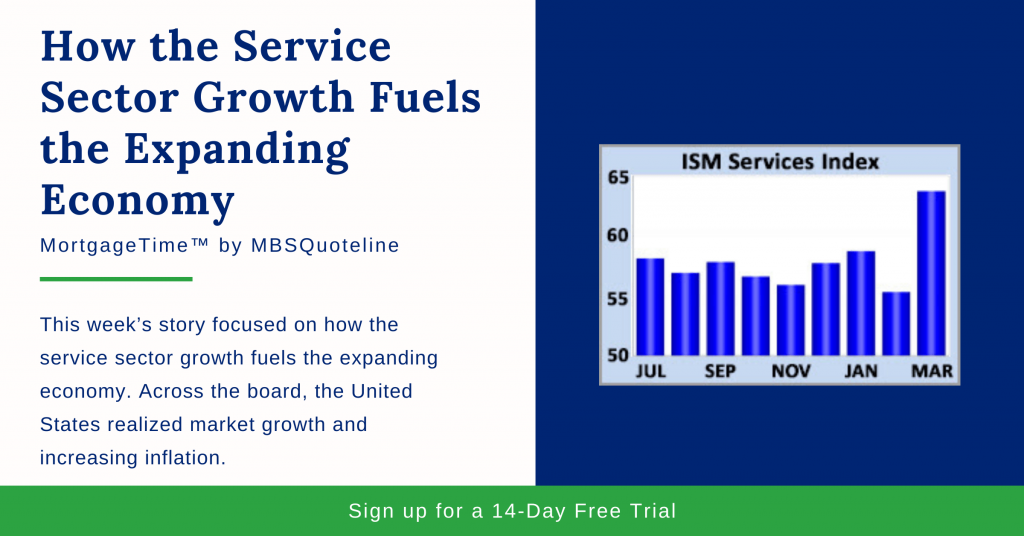This week’s story focused on how the service sector growth fuels the expanding economy. Across the board, the United States realized market growth and increasing inflation. Despite the strong data, mortgage rates ended the week slightly lower.
Service Sector Growth Affects Mortgage Rates
The most significant economic report this week exceeded expectations by a considerable amount. The ISM national services index jumped from 55 to 64. This result is far above the consensus forecast of 59. It is also the highest ISM national services index level ever recorded.
The service sector accounts for more than 75% of the United States’ economic activity. Readings above 50 indicate that the United States economy is expanding. Thus, the service sector growth tends to have a substantial impact on mortgage rates.
Service Sector Growth Dovetails into Employment Data
Last week’s key Employment data revealed that companies are hiring back workers. This is taking place after companies laid off numerous employees throughout the coronavirus pandemic. However, Tuesday’s JOLTS report pointed to exceptional strength in the labor market and service sector growth.
At the end of February, job openings jumped to 7.4 million. Based on analyst expectations, this statistic soared above the consensus forecast. It is also the most monthly job openings since January 2019.
Ultimately, unfilled positions reflect increased demand for more workers, indicating labor market tightness.
Signs of Rising Inflation
The time during the pandemic is characterized by reduced economic activity. Overall, this led to a decline in inflation. The inflation decline is one of the chief factors lowering mortgage rates.
Recently, the vaccine rollout moved forward. In addition, many parts of the United States economy are reopening, and this week reflected service sector growth. Investors worry that inflation may be heading higher. Subsequently, this week’s data amplified those concerns.
The Producer Price Index (PPI) is a widely followed monthly inflation report. PPI looks at the price change for raw materials and intermediate goods used to make final products. In March, PPI jumped 1.0% from February, far above the consensus forecast of 0.5%. Also, PPI rose 4.2% higher than a year ago, the highest annual rate of increase since 2011.
As a result of the service sector growth and expanding economy, there are finally signs of rising inflation.
Looking Ahead After the Service Sector Growth
Looking ahead after the service sector growth, investors monitor the market for COVID-19 case counts and vaccine distribution.
Beyond that, the Consumer Price Index (CPI) comes out on Tuesday. CPI is a widely followed monthly inflation report. Mainly, CPI examines the price change for goods and services.
Retail Sales data releases on Thursday. Consumer spending accounts for over two-thirds of American economic activity. Because of this, retail sales data is a key indicator of growth.
Finally, Existing Home Sales and Housing Starts release on Friday.
Want to see how the service sector growth impacts mortgage-backed securities? Never miss an update with MBSQuoteline. To receive by-the-minute updates on mortgage-backed securities, try our platform free for 14 days.
Stay connected with MBSQuoteline on social media by following us on Facebook and LinkedIn.
All material Copyright © Ress No. 1, LTD (DBA MBSQuoteline) and may not be reproduced without permission. To learn more about the MortgageTime™ newsletter, please contact MBSQuoteline at 800.627.1077 or info@mbsquoteline.com.



